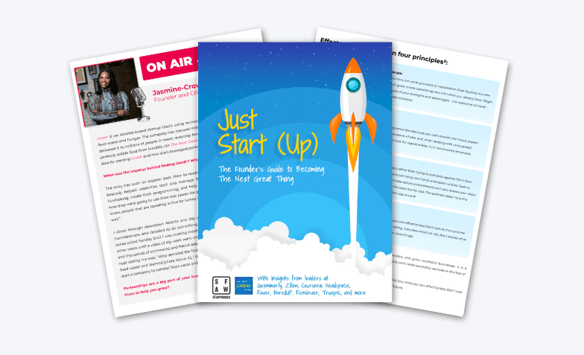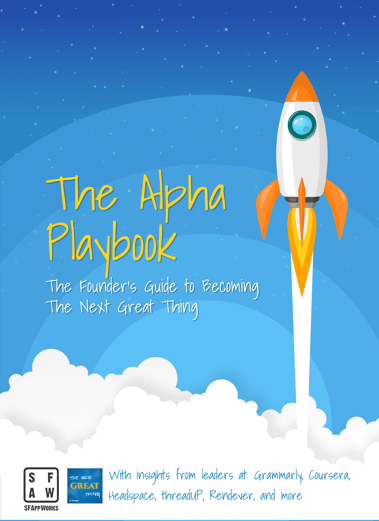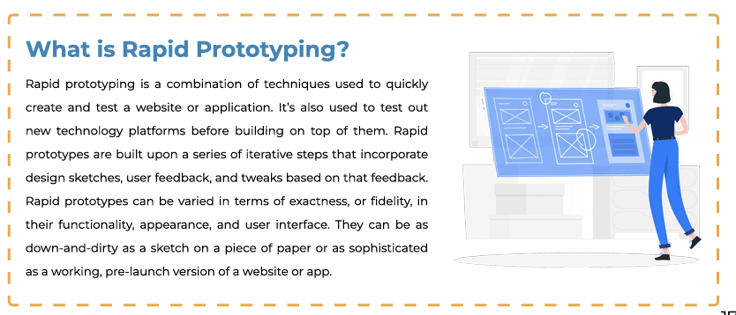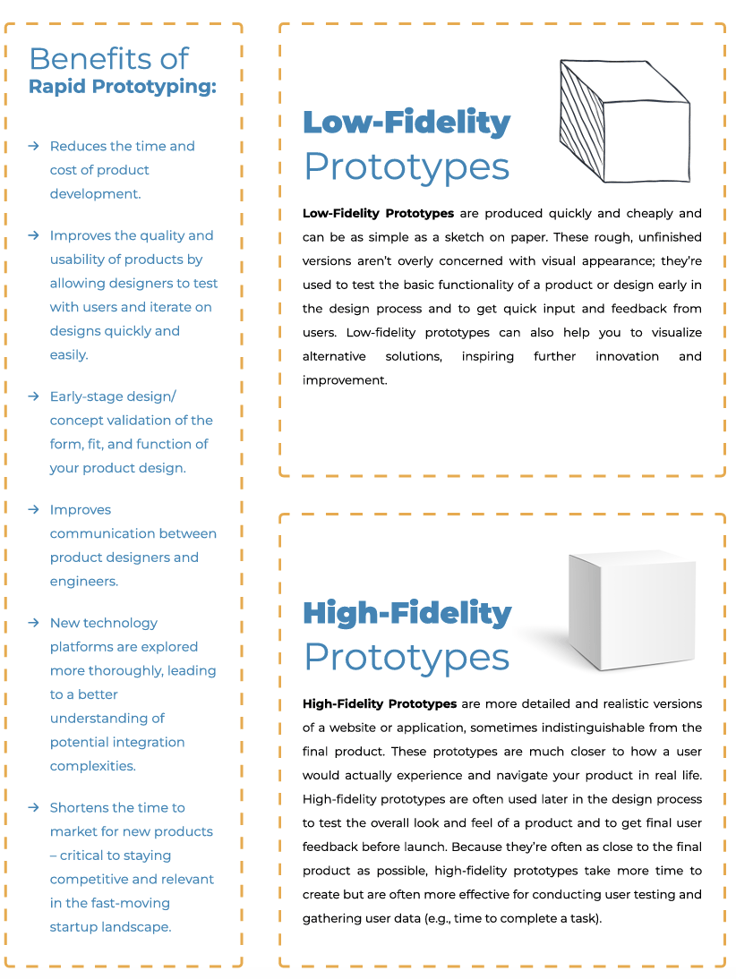It can help a startup founder make better decisions – or lead you to an ah-ha moment. It has the power to influence key stakeholders and potential investors. It can guide teams to get creative, leverage new technologies, and create amazingly successful digital experiences and products.
No, I’m not talking about generative AI. I’m talking about user empathy.
When Rahul Roy-Chowdhury, CEO at Grammarly was a guest on my podcast, The Next Great Thing, he offered a simple yet powerful declaration about the importance of empathy from the product management perspective:
“Fundamentally, the essence of product management is the ability to have empathy for users. It’s the ability to understand that what we're doing is trying to solve a real user need and a real user problem – and always keeping that front and center.”
Related: What I Learned About User-Centricity from Grammarly’s Rahul Roy-Chowdhury
The same applies for startup founders. But, let’s be real: in the day-to-day work of running a startup, there are so many factors and tasks to juggle that it can be easy to lose sight of the user and their problems! It’s a constant balancing act of internal politics, investor pressures, the latest tech trends, payroll, what your competitors are doing, what your team is building, and a million other moving parts, competing demands, and distractions coming from both inside and outside the business.
Get a Free Copy of ‘Just Start (Up): The Founder’s Guide to Becoming The Next Great Thing

Amid all these distractions, getting to user empathy is hard. Or, as Rahul puts it, “It's easy to talk about cliches like ‘put the user first.’ It's just one of those things that people say. It's a different thing to walk the talk.”
That empathy walk is worth it. Great startup founders understand that, above all else, user empathy is a competitive advantage. Understanding users’ lives, what they need, and the problems they need to be solved – that’s how you build a user-centric business, not just a user-centric product.

Startup founders: follow these 5 steps to pump up the empathy, according to some of our favorite podcast guests:
Meet the empathy experts:
 JENNY ARDEN
Chief Design Officer, Zillow Group, one of the largest, most popular real estate websites in the United States
JENNY ARDEN
Chief Design Officer, Zillow Group, one of the largest, most popular real estate websites in the United States
 Rahul Roy-Chowdhury
Rahul Roy-Chowdhury
CEO, Grammarly, one of the world’s most popular and advanced AI communication assistants
 Donna Boyer
Donna Boyer
Chief Product Officer, Teladoc Health, one of the world’s largest providers of telemedicine services
1. Do your user homework.
In a 2022 survey of startup founders, 58% said they wished they’d done more research prior to launch, and 56% advised aspiring founders to listen to their customers. That means fully understanding them and where they’re coming from first. So, ask yourself: Who are your users, really? Is it one type of user? Multiple types of users? Who are the users you want to have today versus the users you might want to reach tomorrow? Figuring all of this out means talking to them, observing them, understanding their motivations, and connecting to their world.
You can do this in a number of quantitative and qualitative ways; for example, through user survey data, interviews, ethnographies, and usability testing. Then, create user personas or empathy maps to go deeper and make it easier for product and design teams to have a shared understanding of users' goals, behaviors, and preferences.
Jenny’s take:
It's really understanding the day in the life of a user – what is making their life not so great, and how do you solve for it? This goes back to user observation, observing people in the wild. We do these things called diary studies, where we actually shadow somebody from the moment they wake up to the moment they go to bed. And you learn a lot about things you can't see in a digital environment.
2. Define the real user problem (not the problem you want to solve).
After you’ve studied your users closely, define the problem or pain point they need to be solved. Often, it’s not what you think and may not totally align with the solution you have in mind. (That’s OK, it’s why you did your homework!)
Why are users experiencing the problem? What they are trying to achieve? What’s the root cause? Write a problem statement that’s clear, specific, and actionable. It should be something that can be solved by your development team. Remember: not all problems are created equal. Some problems are more important to users than others. Prioritize problems based on their impact on users and their likelihood of being solved.
Jenny’s take:
A great business starts with the user and starts with a real human need. You design for it, you solve that problem, and you have a thriving business…First, deeply understand your customer better than anyone else. Obsess [over] it. Continue to observe and recognize that you are not the user. You are a version of the user. You are one instance of what your users might be, but you are not the entire population. So you truly have to watch what they do and really solve the problems that they are faced with.
Related: Designing for Startups: Expert UX Design Solutions for Startups
3. Get creative and brainstorm solutions (apart, then together).
You’ve done the hard work of understanding your users. You’ve gathered the data. You’ve connected the dots. Now you have the white space to get creative. Before brainstorming as a group, have each stakeholder brainstorm on their own first. Then, bring everyone together to take turns sharing their ideas. This approach ensures thoughtful participation and that everyone’s voice is heard. It also leads to the best ideas (sometimes, solutions that are the least expected!). Involve the whole team – designers, engineers, marketers, interns – to generate as many ideas as you can. Encourage out-of-the-box thinking, and create a safe space for freethinking where all ideas are welcome. Look for ways to use new technologies in new ways to your creative advantage, keeping in mind that the best ideas are rooted in the defined user problem, not simply the technology.
Rahul’s take:
We stay rooted in making sure that we are solving real user problems. We're not creating technology in search of solutions. We have a problem that we want to solve, and we'll bring whatever technology and resources we can to bear to solve that problem... And as technology changes and enables new things, we're going to keep changing what we do because, ultimately, we just want to be focused on solving that user problem.
Get A Free Copy Of 'Just Start (Up): The Founder's Guide to Becoming The Next Great Thing'

4. Embrace rapid prototyping and user testing.
Once you have those creative ideas, it’s time to turn them into realistic proofs of concept. Start prototyping and testing them – fast! Your rapid prototypes don’t always have to be fancy, expensive, and highly functional. They just need to be enough so that you can get critical feedback from users and make sure that your solutions are on track to solving their problems.
Donna’s take:
The way that I think about testing with my team is, we need to aggressively look for reasons why we’re wrong. We're right a good amount of the time, but finding the areas where we're wrong, where we're missing the ball, where we're missing an insight – that’s what leads to the biggest product breakthroughs. We are constantly doing prototype testing, pushing ourselves to understand what we are missing – whether it's through quick sketch testing, or prototypes, or watching users walk through and use our live products. There are always opportunities to learn from how people experience your products in the real world.
Rapid Prototyping 101 for Startup Founders


5. Iterate and improve. Rinse and repeat.
Empathy never ends, so great products are never finished. There will always be unexpected usability issues, design flaws, and functional limitations in your initial product. User needs and market conditions will change. What you think is the user-centric website or app you've created today might not be tomorrow. So, keep iterating and improving. That’s how you make progress and get to the good stuff! Doing all of this means (yup, once again) getting valuable feedback from your users, making tweaks, and testing, testing, testing. Again and again.
Jenny’s take:
I always tell my teams that the first five concepts are going to be terrible. Just expect it. Just understand. Your job is to get through the terrible stuff as quickly as you can, so that means rapidly prototyping, iterating over and over again, trying to get as much of the bad stuff out of your system so that you can actually get to the good stuff.


.png?width=300&name=Screen%20Shot%202021-10-25%20at%2011.14.44%20AM%20(1).png)
COMMENTS